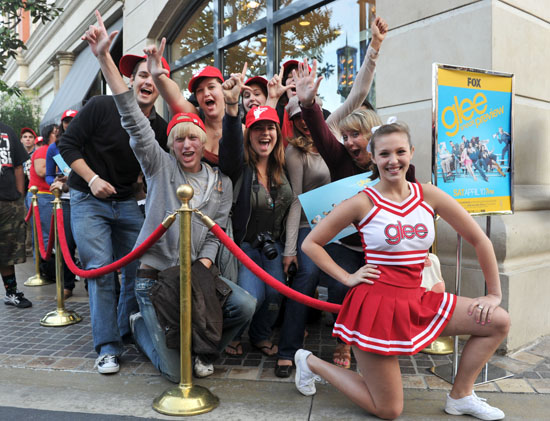The members of McKinley High School glee club, the fictional subjects of the hit FOX television show, “Glee” wanted to make artistic expression socially acceptable at their school. They have since secured a place for show choir and musical theater, not only within their high school, but in the mainstream pop culture and college campuses across the country, including UCLA.
“In the last eight years or so, musicals have been coming back into popular culture,” said Samuel Baltimore, a graduate student in music, referring to films such as “Chicago.” “People have gotten into musical theater.”
“Glee” is not the first show to incorporate musical theater. There have been a number of shows that incorporate singing and choreography, Baltimore said.
“”˜Xena,’ “˜Buffy’ and “˜Scrubs’ all did musical episodes as an excursion into music,” Baltimore said. These “excursions,” however, were limited to one or two episodes and were not a part of the overall series.
“This is the first show with an actual music-related plot,” Baltimore said.
Part of the success of “Glee” lies in its ability to cater to different audiences by bringing in stars from different artistic circles.
“They do a good job with guest stars and promotion,” Baltimore said. “The guest stars are big in certain circles, like Kristin Chenoweth is big in Broadway.”
While “Glee” may not necessarily be the first musically themed show to debut recently, it has become more popular than other shows, such as the reality competition television show on NBC, “The Sing-Off.”
“One of the reasons it was more successful is in the way it was marketed,” said John He, musical director of Bruin Harmony and a third-year physiological science student.
While “Glee” resonates with mainstream viewers, it has also increased the appeal of musical acts such as a capella groups. Since the debut of “Glee,” a cappella group coordinators have seen an increase in potential members.
“In terms of a cappella getting its name out there, “˜Glee’ has helped with that,” He said. “We definitely had a couple of guys who I feel were more inspired to come out and audition because of the show.”
Even before “Glee,” there were noticeable changes in a cappella.
“A cappella over the last couple of years has started moving toward show choir,” He said, referring to the rise in choreography and costume changes.
Despite these similarities, there are fundamental differences between show choir and a cappella. The focus of show choir is in the overall effect of the performances, created by the costumes and dancing, whereas in a cappella, the focus is to create instrumental sounds out of human voices.
“We perform without backing instruments,” He said. “Show choir aims to be along the lines of a choir with more popularly accessible music. A cappella aims to replace instruments.”
“Glee”-mania has, by association, increased the popularity of another musical group. An overall increase in singers can only increase the number of musicians who will someday become classically trained.
“I think it has encouraged loads of high school students to sing who might not have sung in a classically oriented choir,” Donald Neuen, a professor of music, said.
Neuen regularly conducts the UCLA Chorale and the UCLA Chamber singers.
Neuen is a bit of a Will Schuester, the teacher and adviser of the group “New Directions” in “Glee,” played by Matthew Morrison. He started glee clubs at the University of Wisconsin, the University of Tennessee and Ball State University.
“Once students sing in this more popular, choreographed choir, many of them want to switch to more classical choirs,” he said.
Perhaps the biggest impact “Glee” has had on young singers is the same effect it has on the characters. Show choir, a cappella groups and choruses all give singers an arena to broadcast their talents.
“I’ve known situations where kids who had attempted suicide more than once got into choir and (then there were) no more problems. They felt valued, of worth and talented and after that the last things you want to think of is suicide,” Neuen said. “It has saved a lot of lives.”
